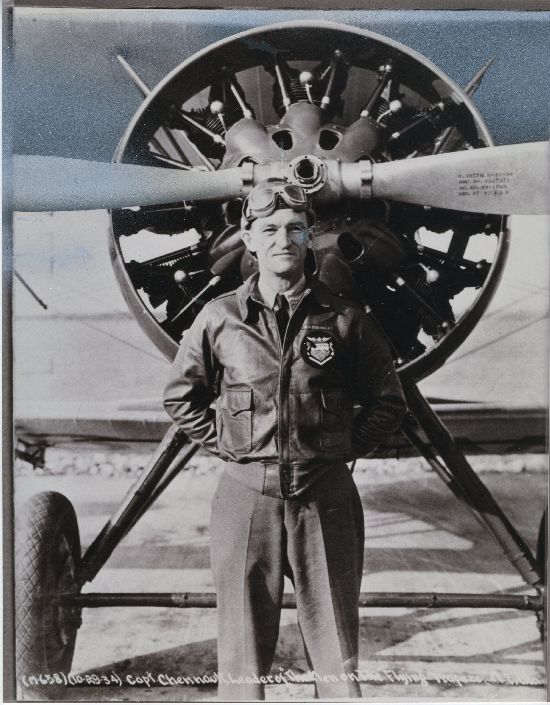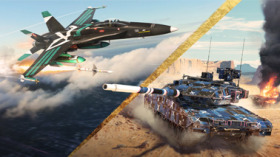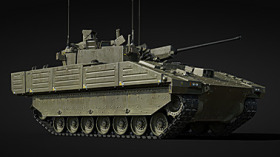
- Для PC
- Для Mac
- Для Linux
- ОС: Windows 10 (64 bit)
- Процессор: Dual-Core 2.2 GHz
- Оперативная память: 4 ГБ
- Видеокарта с поддержкой DirectX версии 11: AMD Radeon 77XX / NVIDIA GeForce GTX 660. Минимальное поддерживаемое разрешение – 720p.
- Сеть: Широкополосное подключение к Интернету
- Место на жестком диске: 22.1 Гб
- ОС: Windows 10/11 (64bit)
- Процессор: Intel Core i5 или Ryzen 5 3600 и выше
- Оперативная память: 16 ГБ
- Видеокарта с поддержкой DirectX 11 и выше: Nvidia GeForce 1060 и выше, Radeon RX 570 и выше
- Сеть: Широкополосное подключение к Интернету
- Место на жестком диске: 62.2 Гб
- Операционная система: Mac OS Big Sur 11.0
- Процессор: Core i5, минимум 2.2GHz (Intel Xeon не поддерживается)
- Оперативная память: 6 Гб
- Видеокарта: Intel Iris Pro 5200 (Mac) или аналогичная видеокарта AMD/Nvidia для Mac (минимальное поддерживаемое разрешение – 720p) с поддержкой Metal
- Место на жестком диске: 22.1 Гб
- Операционная система: Mac OS Big Sur 11.0
- Процессор: Intel Core i7 (Intel Xeon не поддерживается)
- Оперативная память: 8 Гб
- Видеокарта: Radeon Vega II и выше с поддержкой Metal
- Место на жестком диске: 62.2 Гб
- Операционная система: Современные дистрибутивы Linux 64bit
- Процессор: Dual-Core 2.4 ГГц
- Оперативная память: 4 Гб
- Видеокарта: NVIDIA GeForce 660 со свежими проприетарными драйверами (не старее 6 месяцев) / соответствующая серия AMD Radeon со свежими проприетарными драйверами (не старее 6 месяцев, минимальное поддерживаемое разрешение - 720p) с поддержкой Vulkan
- Место на жестком диске: 22.1 Гб
- Операционная система: Ubuntu 20.04 64bit
- Процессор: Intel Core i7
- Оперативная память: 16 Гб
- Видеокарта: NVIDIA GeForce 1060 со свежими проприетарными драйверами (не старее 6 месяцев) / Radeon RX 570 со свежими проприетарными драйверами (не старее 6 месяцев) с поддержкой Vulkan
- Место на жестком диске: 62.2 Гб
Camouflage "White 106" for P-40E-1, 1st American Volunteer Group (AVG, "Flying Tigers"), May 1942, Loiwing/Baoshan
Chinese Air Force | Available in the game for 200  or for shooting down 120/40/20 enemies in AB/RB/SB
or for shooting down 120/40/20 enemies in AB/RB/SB
Born in Commerce, Texas on September 6th 1893, Claire Lee Chennault was the son of a cotton planter and was raised in Louisiana. After studying agriculture and graduating from Louisiana State University he returned to Texas to become a teacher. Whilst studying at university, Chennault showed his first real interest in the military and joined the Reserve Officers’ Training Corps. During the First World War, Chennault served as an officer in the US Army Signal Corps and later the Army Air Service; he was eventually accepted for pilot training but did not qualify until after the end of the war.
 |
| Capt. C.L Chennault poses in front of a Boeing P-12E |
Smitten by military aviation, Chennault opted to remain with the US Army after the cessation of hostilities and the huge demobilization of the military. Specializing in the field of pursuit aviation – or fighters in modern terminology – Chennault became the Chief of the Pursuit Section at the Air Corps Tactical School at Maxwell Field, Alabama as well as leading the Army Air Corps Aerobatics Team. In 1935 he wrote ‘The Role of Defensive Pursuit’ in which he detailed his vision on fighter tactics – his views landed him in trouble with his seniors after he claimed bombers were particularly vulnerable to fighter attack.
Continuing disagreements with air corps command and the onset of a hearing disability led Chennault to retire from the US Army in April 1937, having achieved the rank of captain. Determined to continue flying, Chennault looked overseas for his next opportunity. He did not have to wait long: only two months later he was in China, employed as a flying instructor. Reporting to Kuomintang leader Chiang Kai-shek, Chennault was tasked with carrying out an independent investigation and report of the effectiveness of the Chinese Air Force.
When hostilities erupted with Japan in August, Chennault was propelled into action. Combining the roles of Chief Air Advisor, pilot trainer and flying in operational sorties, Chennault was suddenly one of the most highly valued operators in the country. He was also charged with setting up and leading a squadron of foreign mercenary pilots. With increasing pressure on Chinese forces and a series of lightning victories won by the Japanese, Chennault was sent back to the United States in 1940 as part of a small team tasked with raising financial and logistical support for China.
The push to Washington paid off. Financial aid was secured from the US Government, and Chennault returned with his team to China with a promise of 100 P40 fighters with pilots, maintainers and the logistical back up to keep them running. With promises of a significantly higher salary than paid by the US military - and cash bonuses for confirmed aerial victories - recruitment was not a problem: pilots and ground crew from the US Army, US Navy and US Marine Corps were not in short supply. Successful applicants were called upon to terminate their employment with the US military as the new group – now named the 1st American Volunteer Group – could not be seen internationally to be an overt and political link between the United States and China.
The new aircraft were shipped, assembled and delivered to China to form three squadrons. The pilots were not far behind – some of the aviators who were to see battle in China would go on to illustrious careers, such as Greg ‘Pappy’ Boyington and ‘Ed’ Rector. Soon nicknamed the ‘Flying Tigers’, the P40s were painted with an iconic tiger emblem which Chennault is credited for having approached Walt Disney personally to have produced. Chennault quickly set about training his new team of fighter pilots – first and foremost, he was an advocate of playing to the strengths of his fighters and avoiding the advantages of the Japanese aircraft they would be facing. To that end, he trained his pilots to avoid turning fights at all costs and to use height and speed to dive down, attack, and then climb away to reposition. Doctrinally this was very different to what many nations were teaching at that time, including the United States.
The Flying Tigers first leapt into action in December 1941, when on the 20th two squadrons of P40s intercepted ten Ki-48 bombers, destroying four and forcing them to jettison their bombs before reaching their target. The Flying Tigers were highly effective in their war against Japanese forces whilst operating under Chennault’s leadership; in seven months they claimed 296 enemy aircraft destroyed for the loss of 14 pilots in the air and 10 men on the ground. However, several historians have called these figures into question.
| US Army Air Forces video: "Flying Tigers Bite Back" |
As well as leading the AVG, Chennault continued in the equally vital job of training Chinese pilots. This was important as America’s aid to China would soon be taking a different form with America now formally being at war with Japan. Following the attack on Pearl Harbor, Chennault was brought back into the US Army with the rank of colonel; three promotions from the rank he had left with five years before. The AVG was also brought under the control of the US Army, with pilots and maintainers now wearing US rank.
Chennault continued to operate in the China-Burma-India theatre for the remainder of the war. Promoted to Major General by March 1943, Chennault lobbied for intensive bombing of Japanese forces in theatre and frequently argued with US Army General Stilwell, who criticized corruption within the Chinese system and favoured the use of ground forces rather than air attack. However, the ‘Chennault Plan’ received presidential backing. The rapid increase of air power in the region saw initial successes, but after a series of Japanese offensives in April 1944 many of Chenault’s new air bases were overrun. Chennault’s critics were quick to leap on the opportunity to blame him; he resigned from the US Army Air Force in 1945.
However, Chennault’s involvement with China was far from over. In 1946 he helped form Civil Air Transport, a commercial airline which soon attracted the attention of the newly formed CIA. CAT accepted CIA to funding to help ship personnel and supplies in and out of the area. The airline would later be bought out by the CIA and renamed Air America.
Chennault’s contribution to US aviation was recognised in July 1958 when he was given the honorary rank of Lieutenant General in the United States Air Force. However, he died only days later from lung cancer at the age of 64, survived by ten children from two marriages. He was inducted into the National Aviation Hall of Fame in 1972 and there are statues of Chennault in Taipei and Hunan. Perhaps his greatest legacy is the legendary reputation of the Flying Tigers, immortalized in part by the 1942 movie of the same name. John Wayne leads the cast with the character of Jim Gordon; a fictitious composite character based on several leaders within the Flying Tigers; Claire Lee Chennault clearly being one of them.
About The Author
 |
Mark Barber, War Thunder Historical Consultant Mark Barber is a pilot in the British Royal Navy's Fleet Air Arm. His first book was published by Osprey Publishing in 2008; subsequently, he has written several more titles for Osprey and has also published articles for several magazines, including the UK's top selling aviation magazine 'FlyPast'. His main areas of interest are British Naval Aviation in the First and Second World Wars and RAF Fighter Command in the Second World War. He currently works with Gaijin Entertainment as a Historical Consultant, helping to run the Historical Section of the War Thunder forums and heading up the Ace of the Month series. |
See you in the skies




